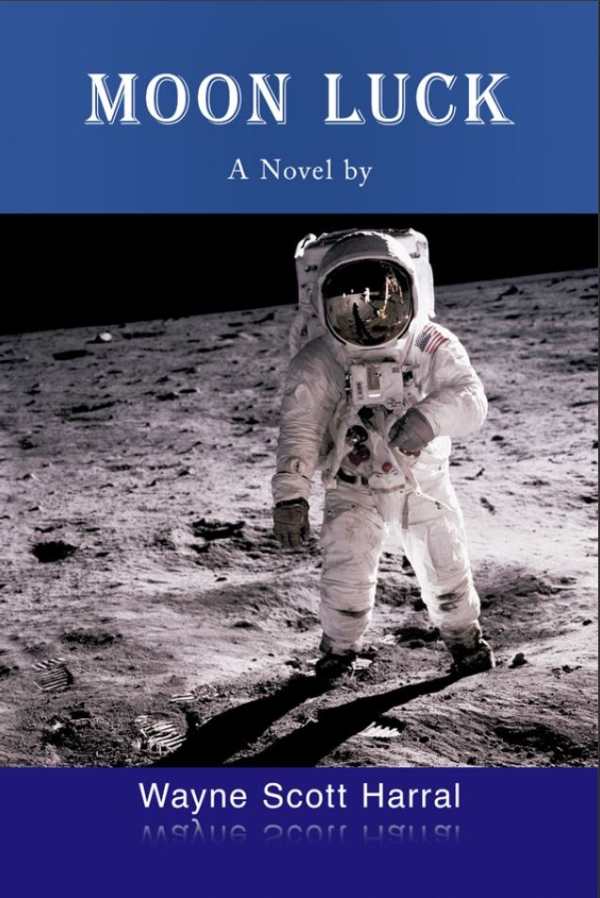Moon Luck
Living on the Moon in the Near Future
The intriguing science fiction novel Moon Luck follows life on a moon research station and its attendant physical and psychological challenges.
In Wayne Scott Harral’s ambitious science fiction novel Moon Luck, human greed, the thrill of space exploration, and a suspected murder come together in a story that anticipates corporate development of the moon.
Set in the year 2039, the novel tracks conflicts on Venturous, a space station hosting the Moon Exploration Team (MET), a partnership between the private corporation SpaceX and US and European space agencies. Conflicts arise between scientists devoted to pure research and those who see research as a path to profit. Then, the unthinkable happens on a station peopled by trained and vetted astronauts: there’s an explosion that seems to have been rigged for a murder.
The novel is most successful in its world building. The physical challenges of living in low gravity are embedded in people’s actions, as with the attention that one new astronaut gives to staying on the ground while walking through the station to ensure that he doesn’t drift up or out into walls and furniture. Technical details are explained in plain, precise language, and—because the story takes place in the near future—they have some familiar elements. For example, the founder of SpaceX, Elon Musk, is no longer running the corporation, but he makes a cameo appearance. Emotional coverage emerges, too, as when people express their excitement at being chosen to work on the Venturous.
But the book’s balance between background information and moment-by-moment action is uneven. It begins with a time-lapsed video chat between an astronaut, Jim, and his family back on Earth. With great efficiency, this conversation shows the challenges of moon-to-Earth communication and maintaining family ties during a lengthy off-planet posting. It also introduces some of the conflicts on the station, where researchers compete for limited resources to fuel their agendas. This delivery of background information goes on for too long, though, taking up almost the first third of the book. But the book’s descriptions of visual elements, like the impacts of meteorite showers, are vibrant and crisp.
The book’s incomplete sentences and excessive exclamation points are a point of distraction. Further, even with extensive descriptions to introduce them, the forty-four named characters blur together and contribute to the plot with varying success. For example: soon after an explosion on the base takes the life of Jim’s friend, Jim fades into the background, and Dan, the Venturous commander, becomes the focus; he’s driven by a quest for justice. Later, Anna becomes involved in the investigation and experiences an epiphany that changes the way she relates to other astronauts. The back matter’s list of characters and their roles is helpful for tracking such details.
Centered on a mysterious explosion, the science fiction novel Moon Luck follows life on a moon research station and its attendant physical and psychological challenges.
Reviewed by
Michele Sharpe
Disclosure: This article is not an endorsement, but a review. The publisher of this book provided free copies of the book and paid a small fee to have their book reviewed by a professional reviewer. Foreword Reviews and Clarion Reviews make no guarantee that the publisher will receive a positive review. Foreword Magazine, Inc. is disclosing this in accordance with the Federal Trade Commission’s 16 CFR, Part 255.

